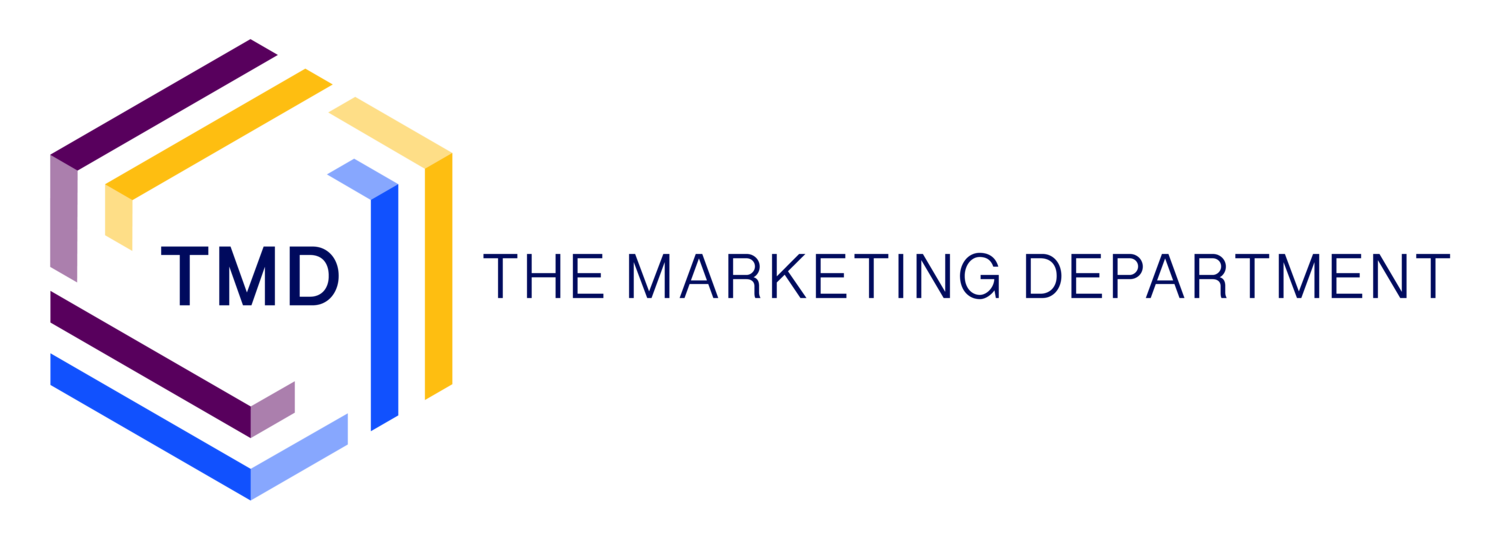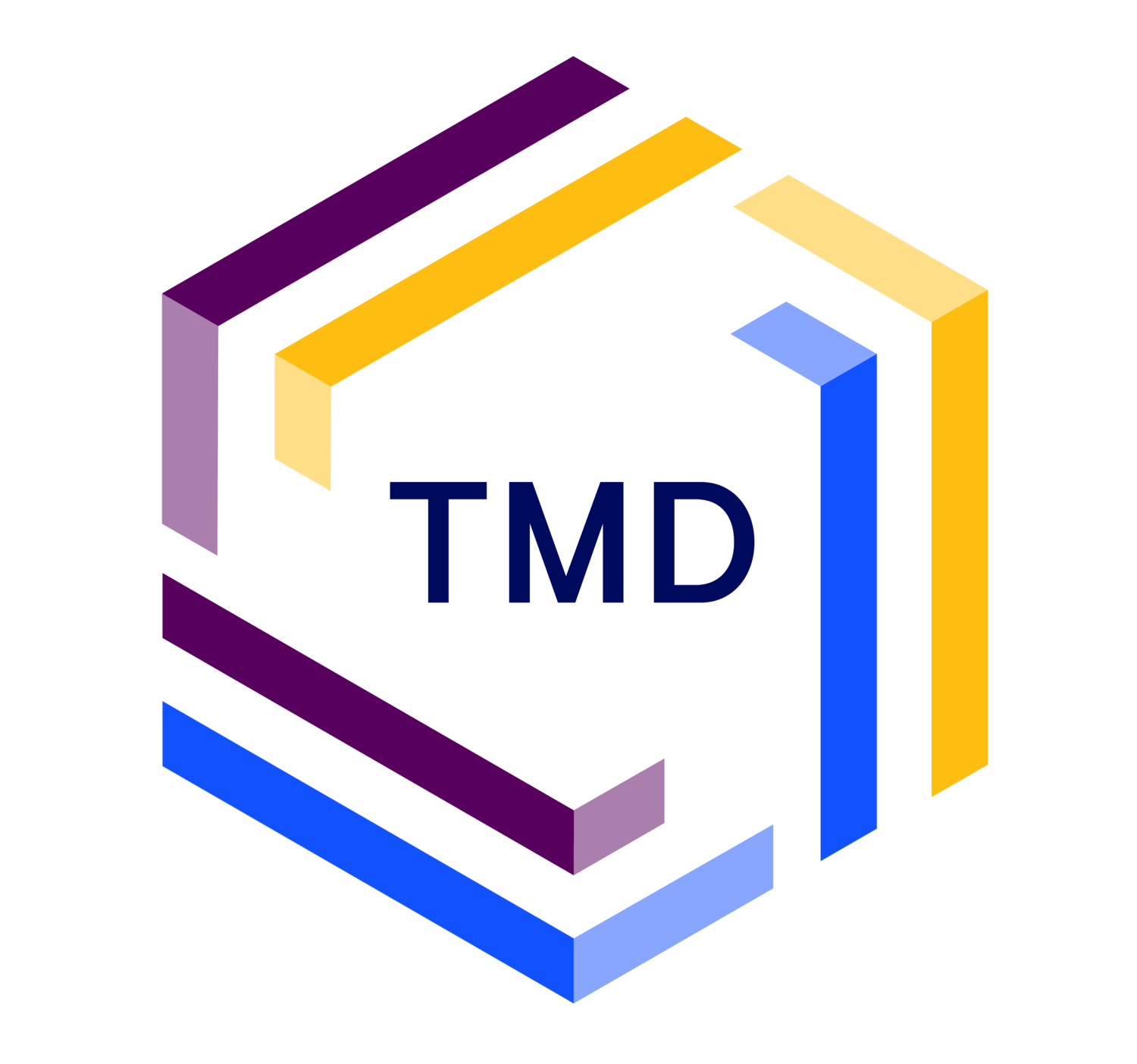5 Questions With — James Anderson, Creative Director
Our ‘5 Question With’ series shares insight into the TMD teams’ experience of agency life. In the fourth instalment we speak to James Anderson. As TMD’s Creative Director, James has independently created, been the lead on or overseen 54 branding projects, 32 website builds and 25 design projects.
What’s been the career path that has lead you to your current role as TMD’s Creative Director?
I don’t come from a ‘traditional’ design background, I didn’t study design. My background is in youth and community development.
I worked for many years overseeing events and information output for the Scottish Community Development Centre, SCDC. In my operational role, I would liaise with an external design agency to create fliers, brochures, you name it. Public finances were under a lot of pressure in the mid 2000s which led to lot of cuts in services, we didn’t have the money to be constantly outsourcing. So, I set about learning what the design agency did.
You see, community development is all about building people’s skills and capacity to do things for themselves, and that applied equally to our organisation. My bosses were very happy for me to learn something new, in fact, they encouraged it.
Fast forward a few years and I was sitting having coffee with my friend Chris (yes our CEO, we’ve been friends for 20 years). We were discussing his next career move and I encouraged him to consider setting up his own business, I even offered to help him with a business plan. It turned out I wasn’t the first person to suggest it. Chris decided to make that move and immediately asked me to be a part of it. I was hesitant at first. Did I belong in the marketing world? Could we use our new platform to support the community and charity sectors, which is ultimately my passion? Chris convinced me, I am thrilled that he did.
One of our first re-branding projects was for a print company specialising in metallic foil labelling. I came up with this design which used a CMYK colour palette with a metallic finish. I remember all of us crammed into our goldfish-bowl of an office, and there was this audible gasp when I revealed the final brandmark to the client — they could immediately see themselves in it, they didn’t need me to explain it to them. That’s when it became clear I would lead on creative stuff at TMD.
What drew you to community development?
Just who I am, if I’m honest.
Where I grew up was a deprived area of Glasgow. I certainly didn’t feel deprived — I wanted for nothing — but the reality is I relied on youth work services as a child, to experience the things I wouldn’t otherwise have had the opportunity to through friends or family or school. Hence, I’ve always been drawn to organisations that allow for better opportunities.
That spirit has carried over to TMD, in fact. When Chris asked me to come on board, I remember saying to him that I had no interest in working for a private sector that puts money in the pockets of fat cats. We agreed we would build TMD in a way that had a social responsibility, and was able to support work within the third sector. And just look at how much work we do in the third sector now.
Out-with work, I was previously on the management committee of the Govan Youth Information Project and am currently on the board of a charity called SWAN. SWAN works to improve inclusivity for diverse communities in Scottish workplaces. So yes — feeling like I’m ‘giving back’ is really important to me.
What have been your proudest achievements at TMD?
For one, our work at COP26.
TMD was born of the idea of servicing the SME community, but COP26 put us front and centre, establishing us in the minds of senior decision makers at some really big organisations. Overnight, we became a competitor to the heavy-hitting marketing agencies that exist in Glasgow. And we’re working with bigger companies every day. I’m very proud of that.
Another thing I’m really proud of is HIV Self Test Scotland, because of the speed with which we had to turn that around. Sexual health clinics had shut due to the initial COVID-19 lockdown, which meant people at risk of HIV were going untested — which is bad enough, but that fact meant they were also at heightened risk of COVID-19 due to HIV being an auto-immune disorder. We created the HIV Self Test Scotland brand and website, and within weeks of it going live, tens of thousands of people had been tested — a huge achievement.
Aside from design, is there anything else you consider yourself to be particularly good at?
Events!
Event organisation, promotion, the running of them on the day. I’ve done so many events, it was such a huge part of my job at SCDC. We ran focus groups, small training sessions, larger policy forums, right up to week-long, international conferences. I must have spent eight years of my life on trains and buses and in cars, going to community centres around Scotland, and libraries, and hotels, and training companies… Anywhere we could find space to use really.
Chris did a lot of events in his former professional roles too, so we were very clear from the outset that there would be an events side to TMD. What we’ve done with events here is to put our own spin on them — we brand them, we build websites for them, we do comms and PR around them. I’m able to merge the operational stuff I used to do with the creative stuff I do now, which works really well.
Do you have a dream project?
That’s tricky. I wouldn’t want to answer this and look back in six months thinking, ‘oh I should have said that’.
Everything I design I try to make aspirational. I want the client’s staff and customers and stakeholders to look at their brand and think, ‘We want to be as good as this. We want to carry through this brand and be proud of it’. In terms of my own aspirations though, sometimes they have to get parked because you have to be realistic about the work that’s in front of you.
What I will say is… I’d like to do something at scale. Something where perhaps the client has multiple premises, or hundreds of staff in different places — because there’s a challenge to that. For example, how do you make a brand’s signage work across sites, with various buildings and placements and aspects? It’s a great problem to have.
So for me, it’s about scale over any specific client or industry. What that scale is? I don’t know… just, something meaty.







